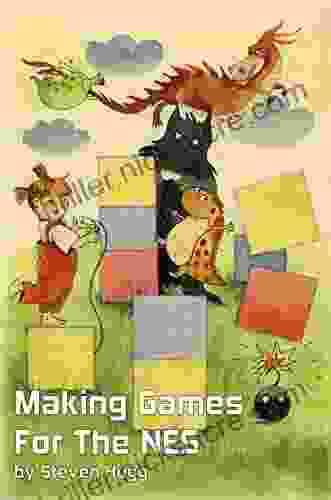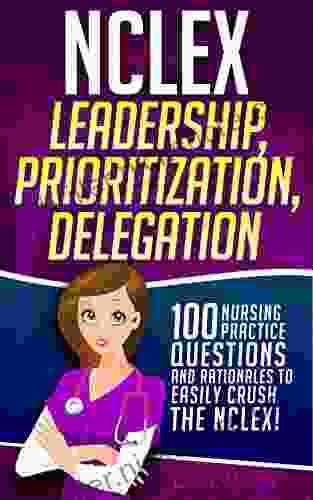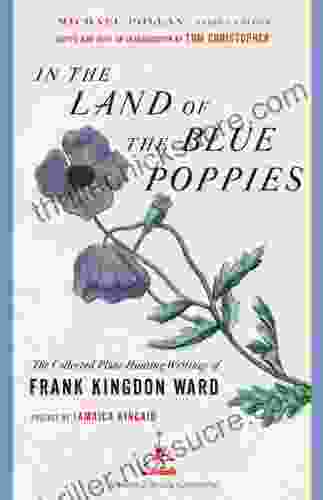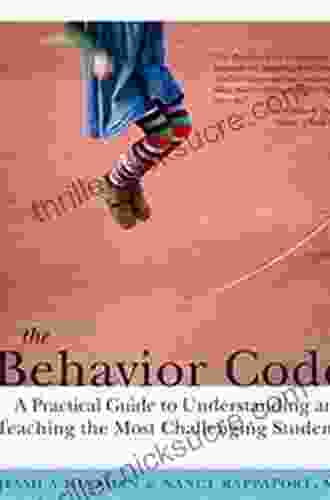The Practical Guide to Understanding and Teaching the Most Challenging Students

Every educator has encountered students who present unique challenges in the classroom. These students may struggle with academic concepts, exhibit disruptive behaviors, or have difficulty interacting with peers. Understanding the underlying causes of these challenges and developing effective strategies to address them is crucial for creating a positive and supportive learning environment for all students.
4.5 out of 5
| Language | : | English |
| File size | : | 6138 KB |
| Text-to-Speech | : | Enabled |
| Screen Reader | : | Supported |
| Enhanced typesetting | : | Enabled |
| Word Wise | : | Enabled |
| Print length | : | 280 pages |
This comprehensive guide will provide you with practical insights and strategies for effectively understanding and teaching the most challenging students. By delving into the root causes of challenging behaviors, exploring evidence-based interventions, and fostering collaboration between educators, parents, and students, you can create a classroom where every student feels valued and supported.
Understanding the Root Causes of Challenging Behaviors
To effectively address challenging behaviors, it is essential to first understand the underlying causes. These may include:
- Learning disabilities: Students with learning disabilities may struggle to understand and process information, leading to frustration and behavioral issues.
- Emotional and behavioral disorders: These disorders can manifest in a variety of ways, including aggression, anxiety, and withdrawal.
- Trauma: Students who have experienced trauma may have difficulty regulating their emotions and behaviors.
- Environmental factors: Poverty, family problems, and peer pressure can all contribute to challenging behaviors.
Once you have identified the potential root causes, you can develop targeted interventions to address the underlying issues.
Evidence-Based Interventions for Challenging Behaviors
There are a variety of evidence-based interventions that can be effective in addressing challenging behaviors. These include:
- Positive reinforcement: Rewarding students for desired behaviors can help to motivate them to continue those behaviors.
- Behavior modification: This approach involves identifying the antecedents and consequences of challenging behaviors and modifying them to reduce the likelihood of the behavior occurring.
- Social skills training: Students who struggle with social interactions can benefit from learning appropriate social skills.
- Self-regulation strategies: Teaching students self-regulation techniques can help them to manage their emotions and behaviors.
- Medication: In some cases, medication may be necessary to address underlying mental health conditions that contribute to challenging behaviors.
It is important to select interventions that are tailored to the individual needs of the student and to monitor their effectiveness regularly.
Fostering Collaboration between Educators, Parents, and Students
Collaboration between educators, parents, and students is essential for the success of students with challenging behaviors. By working together, you can create a cohesive and supportive learning environment for the student.
- Educators: Share your observations and concerns with parents and work together to develop effective interventions.
- Parents: Provide information about your child's history, strengths, and challenges. Be involved in the development and implementation of interventions.
- Students: Involve students in the development of interventions and give them a voice in their own education.
By fostering a collaborative relationship, you can create a supportive environment where students feel valued and supported.
Creating a Positive and Supportive Learning Environment
In addition to implementing evidence-based interventions and fostering collaboration, creating a positive and supportive learning environment is essential for the success of students with challenging behaviors.
- Build relationships: Get to know your students and build relationships with them. This will help you to understand their needs and to create a supportive learning environment.
- Establish clear expectations: Students need to know what is expected of them in the classroom. Establish clear rules and expectations and be consistent in enforcing them.
- Provide positive feedback: Focus on the positive behaviors of your students and provide them with positive feedback. This will help to motivate them to continue those behaviors.
- Create a safe and respectful environment: All students deserve to feel safe and respected in the classroom. Create a classroom environment where students feel comfortable sharing their thoughts and ideas.
By creating a positive and supportive learning environment, you can help students with challenging behaviors to succeed academically and socially.
Understanding and teaching the most challenging students can be a complex and rewarding experience. By delving into the root causes of challenging behaviors, exploring evidence-based interventions, and fostering collaboration between educators, parents, and students, you can create a positive and supportive learning environment where every student feels valued and supported. Remember to be patient, compassionate, and persistent, and you will see your students make progress.
4.5 out of 5
| Language | : | English |
| File size | : | 6138 KB |
| Text-to-Speech | : | Enabled |
| Screen Reader | : | Supported |
| Enhanced typesetting | : | Enabled |
| Word Wise | : | Enabled |
| Print length | : | 280 pages |
Do you want to contribute by writing guest posts on this blog?
Please contact us and send us a resume of previous articles that you have written.
 Fiction
Fiction Non Fiction
Non Fiction Romance
Romance Mystery
Mystery Thriller
Thriller SciFi
SciFi Fantasy
Fantasy Horror
Horror Biography
Biography Selfhelp
Selfhelp Business
Business History
History Classics
Classics Poetry
Poetry Childrens
Childrens Young Adult
Young Adult Educational
Educational Cooking
Cooking Travel
Travel Lifestyle
Lifestyle Spirituality
Spirituality Health
Health Fitness
Fitness Technology
Technology Science
Science Arts
Arts Crafts
Crafts DIY
DIY Gardening
Gardening Petcare
Petcare Pittacus Lore
Pittacus Lore Patricia Wooster
Patricia Wooster Bryan Berard
Bryan Berard David Sinclair
David Sinclair David M Ewalt
David M Ewalt Brogan Steele
Brogan Steele Claudia Gray
Claudia Gray Eric R Dodge
Eric R Dodge Judith A Owens
Judith A Owens Fritjof Capra
Fritjof Capra Milne Cc Pocock
Milne Cc Pocock Genevieve Bardwell
Genevieve Bardwell Stephanie Perkins
Stephanie Perkins Scott Hawthorn
Scott Hawthorn Estelle Dautry
Estelle Dautry Warren Hansen
Warren Hansen Mark Lazerus
Mark Lazerus Joan Nathan
Joan Nathan Kate Mcmillan
Kate Mcmillan Tom M Apostol
Tom M Apostol Dr Alison Dibarto Goggin
Dr Alison Dibarto Goggin John Wesson
John Wesson Eduardo Montano
Eduardo Montano Emilee Day
Emilee Day Collins O Onwe
Collins O Onwe Shayla Black
Shayla Black Ivan Savov
Ivan Savov Jonti Marks
Jonti Marks Kevin Marx
Kevin Marx Lana Peek
Lana Peek Jaime Flowers
Jaime Flowers John Bradshaw
John Bradshaw Mahmood Mamdani
Mahmood Mamdani Kathleen Cushman
Kathleen Cushman Carol Dawson
Carol Dawson Tim Dunn
Tim Dunn Maria Sharapova
Maria Sharapova Gene Kritsky
Gene Kritsky Marc Bona
Marc Bona Adam Night
Adam Night Dr Faith G Harper
Dr Faith G Harper Jules Wake
Jules Wake Tim Falconer
Tim Falconer Peggy Kaye
Peggy Kaye Carlo Zen
Carlo Zen Jeremy Bradstreet
Jeremy Bradstreet Natalia Ilyin
Natalia Ilyin Chuanwei Li
Chuanwei Li Nick Heil
Nick Heil Worth Books
Worth Books Kusha Karvandi
Kusha Karvandi F Brent Neal
F Brent Neal James M Jones
James M Jones Mariana Monteiro
Mariana Monteiro Marco Polo
Marco Polo Lewis Black
Lewis Black Jacqueline Houtman
Jacqueline Houtman Denise Long
Denise Long Rahul Jandial
Rahul Jandial Mary Strand
Mary Strand Mark J Ferrari
Mark J Ferrari Mike Eastman
Mike Eastman Nancy Boyd Franklin
Nancy Boyd Franklin Einat L K
Einat L K Steven Emanuel
Steven Emanuel Richard Kasper
Richard Kasper Rich Osthoff
Rich Osthoff Smart Edition
Smart Edition Judy H Wright
Judy H Wright Douglas R Hofstadter
Douglas R Hofstadter Ksenia K
Ksenia K Joyce Bas
Joyce Bas E G Richards
E G Richards Mike Weatherstone
Mike Weatherstone Mark Howard
Mark Howard Seb Falk
Seb Falk Ethan Bezos
Ethan Bezos Rob Vollman
Rob Vollman Christine Brennan
Christine Brennan Matthew Desmond
Matthew Desmond Mitt Romney
Mitt Romney Luis Preto
Luis Preto Derek Blasberg
Derek Blasberg Scott Zimmerman
Scott Zimmerman Neil S Jacobson
Neil S Jacobson Peter Wacht
Peter Wacht Carol Walters
Carol Walters Adrienne Onofri
Adrienne Onofri Nehemia Gordon
Nehemia Gordon David Mcclung
David Mcclung Jessica Minahan
Jessica Minahan Inge Bell
Inge Bell John Cooper
John Cooper Scott Reed
Scott Reed Wil Fleming
Wil Fleming Loan Le
Loan Le Masaaki Kijima
Masaaki Kijima Mitchel P Roth
Mitchel P Roth Krishna Godhania
Krishna Godhania David Hackett Fischer
David Hackett Fischer Steve Schwartz
Steve Schwartz Laura A Jana
Laura A Jana Sam Sorbo
Sam Sorbo Martin A Lee
Martin A Lee Jonathan H Turner
Jonathan H Turner Sean Michael Wilson
Sean Michael Wilson David Wootton
David Wootton Peter Zuckerman
Peter Zuckerman Gerson S Sher
Gerson S Sher Inger Mewburn
Inger Mewburn Patti Henry
Patti Henry Xavier Wells
Xavier Wells Soong Chan Rah
Soong Chan Rah James Kaiser
James Kaiser Rachel Mcgrath
Rachel Mcgrath Bruce A Fenderson
Bruce A Fenderson D Levesque
D Levesque Renee Jain
Renee Jain St Teresa Of Avila
St Teresa Of Avila Grete Waitz
Grete Waitz Chuck Callaway
Chuck Callaway Guy P Harrison
Guy P Harrison Lily Raff Mccaulou
Lily Raff Mccaulou Paula Brackston
Paula Brackston James D Tabor
James D Tabor Miguel Crespo
Miguel Crespo Matt Davids
Matt Davids Karl F Kuhn
Karl F Kuhn Kathleen Taylor
Kathleen Taylor Ned Mcintosh
Ned Mcintosh Jodi Aman
Jodi Aman Brion Toss
Brion Toss Charles Todd
Charles Todd John Mclachlan
John Mclachlan John A Fortunato
John A Fortunato Joe Grant
Joe Grant Mark William
Mark William Brett Cohen
Brett Cohen Roach Mary
Roach Mary James A Whittaker
James A Whittaker M A Hayat
M A Hayat George Olsen
George Olsen Paul Farmer
Paul Farmer Cecilia Twinch
Cecilia Twinch Santari Green
Santari Green Matt Schifferle
Matt Schifferle Kaylene Yoder
Kaylene Yoder Tadashi Yoshimura
Tadashi Yoshimura S Connolly
S Connolly Mary Heffernan
Mary Heffernan Melanie Challenger
Melanie Challenger Thomas Malory
Thomas Malory David Flanagan
David Flanagan William Albert Robinson
William Albert Robinson Heyward Coleman
Heyward Coleman Chukwuma Eleodimuo
Chukwuma Eleodimuo Sonja Schwartzbach
Sonja Schwartzbach John Major Jenkins
John Major Jenkins Natalia Rojas
Natalia Rojas Scott Jurek
Scott Jurek Dan Fullerton
Dan Fullerton Nate Allen
Nate Allen Maggie Dallen
Maggie Dallen Elwyn Hartley Edwards
Elwyn Hartley Edwards Pat Manocchia
Pat Manocchia Victor A Bloomfield
Victor A Bloomfield Nadim Saad
Nadim Saad Sara Elliott Price
Sara Elliott Price Melinda Tankard Reist
Melinda Tankard Reist Emil Frlez
Emil Frlez Phyllis Books
Phyllis Books Matt Morton
Matt Morton Colleen Craig
Colleen Craig Kent Hoffman
Kent Hoffman Steven Trustrum
Steven Trustrum Joanna Faber
Joanna Faber Genie Reads
Genie Reads Alex Horne
Alex Horne Mike Adams
Mike Adams Ursula Hackett
Ursula Hackett Meg Cabot
Meg Cabot Tom Cunliffe
Tom Cunliffe Ann Imig
Ann Imig Ian Tuhovsky
Ian Tuhovsky Deepak Chopra
Deepak Chopra Kate S Martin
Kate S Martin Ilchi Lee
Ilchi Lee Steven Cross
Steven Cross Iwan Rhys Morus
Iwan Rhys Morus Sandra M Nettina
Sandra M Nettina Jp Lepeley
Jp Lepeley Oded Galor
Oded Galor Julie Cangialosi
Julie Cangialosi Martin Odersky
Martin Odersky Bonnie Henderson
Bonnie Henderson F R Lifestyle
F R Lifestyle Trish Kuffner
Trish Kuffner Celina Grace
Celina Grace Elizabeth Davis
Elizabeth Davis Dava Sobel
Dava Sobel John Fraser Hart
John Fraser Hart Jackson T Markbrown
Jackson T Markbrown Dave Ramsey
Dave Ramsey Stuart Woods
Stuart Woods Mark Seemann
Mark Seemann Grace Friedman
Grace Friedman Elliot Davis
Elliot Davis Brian Reddington
Brian Reddington Danny Staple
Danny Staple Jackie Freeman
Jackie Freeman Sriman Sharma
Sriman Sharma Cindy Margolis
Cindy Margolis Roshani Chokshi
Roshani Chokshi David Barrett
David Barrett Marc J Reilly
Marc J Reilly Janae M Robinson
Janae M Robinson Janice L Raymond
Janice L Raymond Claudia M Gold
Claudia M Gold Kazumi Tabata
Kazumi Tabata Jhenah Telyndru
Jhenah Telyndru Jimmie Holland
Jimmie Holland Carol Newell
Carol Newell Charlie Francis
Charlie Francis Nathan Halberstadt
Nathan Halberstadt Helen Zee
Helen Zee T J Tomasi
T J Tomasi Jp Kriya
Jp Kriya Khalid Khashoggi
Khalid Khashoggi Molly Caldwell Crosby
Molly Caldwell Crosby Richard Blais
Richard Blais Matt Parker
Matt Parker Paul Simpson
Paul Simpson Loyd Ellis
Loyd Ellis William Trubridge
William Trubridge Harry Vardon
Harry Vardon Marguerite Henry
Marguerite Henry Kevin Alexander
Kevin Alexander Rick J Scavetta
Rick J Scavetta Michel Odent
Michel Odent Pedro Sarmiento De Gamboa
Pedro Sarmiento De Gamboa J R Harris
J R Harris Jeannie Burlowski
Jeannie Burlowski Cheryl Diamond
Cheryl Diamond Paula Span
Paula Span Stephen Hawking
Stephen Hawking Manfred Theisen
Manfred Theisen Kelle James
Kelle James Gjoko Muratovski
Gjoko Muratovski Harry Bauld
Harry Bauld Rick Steves
Rick Steves Laurie A Watkins
Laurie A Watkins Gerald R Allen
Gerald R Allen Kerry Mcdonald
Kerry Mcdonald Megan Whalen Turner
Megan Whalen Turner Varg Freeborn
Varg Freeborn Mark Johnston
Mark Johnston Catherine Shainberg
Catherine Shainberg Richard Hingley
Richard Hingley John M Taylor
John M Taylor Daniel Vaughan
Daniel Vaughan Douglas Wood
Douglas Wood Robert Wright
Robert Wright Brian Noyes
Brian Noyes Gerald L Schroeder
Gerald L Schroeder Stephanie Sarkis
Stephanie Sarkis Joseph Burbridge
Joseph Burbridge Paul Carus
Paul Carus Lisa Druxman
Lisa Druxman Daniel Bagur
Daniel Bagur James Floyd Kelly
James Floyd Kelly Patrick Garbin
Patrick Garbin Gustav Meyrink
Gustav Meyrink Courtney Macavinta
Courtney Macavinta Jim White
Jim White P A Johnson
P A Johnson Della Ata Khoury
Della Ata Khoury Malcolm Hebron
Malcolm Hebron Nicholas Gallo
Nicholas Gallo Steve Williams
Steve Williams Htebooks
Htebooks Rob Collins
Rob Collins Maurice Herzog
Maurice Herzog James O Prochaska
James O Prochaska Keith Foskett
Keith Foskett Emily Lauren Dick
Emily Lauren Dick Larry A Yff
Larry A Yff Luis Angel Echeverria
Luis Angel Echeverria Jonathan Grix
Jonathan Grix David Murray
David Murray Martin Wells
Martin Wells Steven Shapin
Steven Shapin Don L Gates
Don L Gates Vincent W Davis
Vincent W Davis Harold Gatty
Harold Gatty Cal Ripken
Cal Ripken J F James
J F James Brooks Blevins
Brooks Blevins Clyde Soles
Clyde Soles Florence Weiser
Florence Weiser John Jeffries Martin
John Jeffries Martin Clayton King
Clayton King Steven Hugg
Steven Hugg Susan F Paterno
Susan F Paterno Sara Gaviria
Sara Gaviria Paul Weamer
Paul Weamer Michael Ruhlman
Michael Ruhlman Michael Sullivan Iii
Michael Sullivan Iii Scott Haines
Scott Haines Steven W Vannoy
Steven W Vannoy Toni Weschler
Toni Weschler Matt Wastradowski
Matt Wastradowski James Dean
James Dean Avery Faigenbaum
Avery Faigenbaum Rosalyn Sheehy
Rosalyn Sheehy Brittany Cavallaro
Brittany Cavallaro Joseph Ewing
Joseph Ewing Stephen Wood
Stephen Wood Martin Sternstein
Martin Sternstein James Zug
James Zug Jemar Tisby
Jemar Tisby Garrett Redfield
Garrett Redfield Jennifer Block
Jennifer Block Lenore Skenazy
Lenore Skenazy Nicole Morales Lm Cpm
Nicole Morales Lm Cpm Megan Davidson
Megan Davidson Elizabeth Dupart
Elizabeth Dupart Wilborn Hampton
Wilborn Hampton Bruce Lee
Bruce Lee Lori Lyons
Lori Lyons Robin Dunbar
Robin Dunbar William Souder
William Souder Bruce Macdonald
Bruce Macdonald Richard Bass
Richard Bass Steve Bromley
Steve Bromley Nicholas Bjorn
Nicholas Bjorn Ronald M Rapee
Ronald M Rapee Daniel Dell Uomo
Daniel Dell Uomo Nora Roberts
Nora Roberts Dinesh Kumar Goyal
Dinesh Kumar Goyal Brian Herne
Brian Herne Guido W Imbens
Guido W Imbens Keith Ammann
Keith Ammann Sarah Kleck
Sarah Kleck Dan Washburn
Dan Washburn Brett Stewart
Brett Stewart Dave Cutcher
Dave Cutcher John Mcenroe
John Mcenroe Dr Nanhee Byrnes
Dr Nanhee Byrnes Jeannette De Wyze
Jeannette De Wyze Christopher Ketcham
Christopher Ketcham Lisa Scottoline
Lisa Scottoline John D Couch
John D Couch Gabriel F Federico
Gabriel F Federico Brian Kilmeade
Brian Kilmeade Howtodressage
Howtodressage John Moren
John Moren Vicki Franz
Vicki Franz David Levithan
David Levithan Caitlin Flanagan
Caitlin Flanagan J R Mathews
J R Mathews Joel Ingersoll
Joel Ingersoll Jacques Vallee
Jacques Vallee Lee Alan Dugatkin
Lee Alan Dugatkin Erin Mckittrick
Erin Mckittrick Nicholas S Howe
Nicholas S Howe Mick Conefrey
Mick Conefrey Ji Kim
Ji Kim Cassandra Overby
Cassandra Overby Jeremy J Baumberg
Jeremy J Baumberg Patrick Carnes
Patrick Carnes Cecelia Ahern
Cecelia Ahern Doug Peacock
Doug Peacock Jay H Lefkowitch
Jay H Lefkowitch Breanna Hayse
Breanna Hayse Eric Michael
Eric Michael Sarah Lamb
Sarah Lamb Kira Breed Wrisley
Kira Breed Wrisley Phil Williams
Phil Williams J C Cervantes
J C Cervantes Lucia Guglielminetti
Lucia Guglielminetti Jameswesley Rawles
Jameswesley Rawles Bret Stetka
Bret Stetka Sue Wieger
Sue Wieger Penny Alexander
Penny Alexander Richard A Jaffe
Richard A Jaffe Robert Ullman
Robert Ullman Joanna Philbin
Joanna Philbin Timothy A Sisemore
Timothy A Sisemore Michael Shaw
Michael Shaw Richard Post
Richard Post Kindle Edition
Kindle Edition Jean Nayar
Jean Nayar Bernard Darwin
Bernard Darwin Murray Shukyn
Murray Shukyn Eze Ugbor
Eze Ugbor Shannon Warden
Shannon Warden Tyler Hamilton
Tyler Hamilton Cpt Exam Prep Team
Cpt Exam Prep Team Phillip Stephen Schulz
Phillip Stephen Schulz Thomas A Jacobs
Thomas A Jacobs Geoffrey Simpson
Geoffrey Simpson Lucinda Scala Quinn
Lucinda Scala Quinn Steve Wiegand
Steve Wiegand Jennifer Comeaux
Jennifer Comeaux Porter Shimer
Porter Shimer Brian Gewirtz
Brian Gewirtz Kyle Rohrig
Kyle Rohrig Neil Postman
Neil Postman Steven Verrier
Steven Verrier Zigzag English
Zigzag English Michael Mason
Michael Mason Frederick L Coolidge
Frederick L Coolidge 1st Ed 2018 Edition Kindle Edition
1st Ed 2018 Edition Kindle Edition Michael Masters
Michael Masters Brian R King
Brian R King Charles Wilson
Charles Wilson Terence Tao
Terence Tao Megan Kelley Hall
Megan Kelley Hall Sujit Sivasundaram
Sujit Sivasundaram Mohammad F Anwar
Mohammad F Anwar Keith Ryan Cartwright
Keith Ryan Cartwright Mark Powell
Mark Powell Thao Te
Thao Te Jane Albert
Jane Albert Hal R Varian
Hal R Varian Chase Hassen
Chase Hassen Samantha Michaels
Samantha Michaels Jd Tanner
Jd Tanner Lisa Leake
Lisa Leake Brett Hull
Brett Hull Joanna Sayago Golub
Joanna Sayago Golub Tobe Melora Correal
Tobe Melora Correal Grace Mccready
Grace Mccready Derick Lugo
Derick Lugo Melissa Trevathan
Melissa Trevathan Megan Smolenyak
Megan Smolenyak D S Malik
D S Malik Michael Barkun
Michael Barkun Colette Harris
Colette Harris Deborah Shouse
Deborah Shouse Matt Doeden
Matt Doeden David Cannon
David Cannon Jez Cajiao
Jez Cajiao Karen E Mcconnell
Karen E Mcconnell T D Wilson
T D Wilson Rob Coppolillo
Rob Coppolillo William Shakespeare
William Shakespeare David Schoem
David Schoem Arthur Scott Bailey
Arthur Scott Bailey G E R Lloyd
G E R Lloyd Daniel Bergner
Daniel Bergner David Hoffman
David Hoffman Colleen Doyle Bryant
Colleen Doyle Bryant Samuel Greenberg
Samuel Greenberg Ted Franklin Belue
Ted Franklin Belue Christy Teglo
Christy Teglo James Miller
James Miller Karen Ward Mahar
Karen Ward Mahar John Monaghan
John Monaghan Bobbi Conner
Bobbi Conner Piero Ferrucci
Piero Ferrucci Diane Ravitch
Diane Ravitch David Barrie
David Barrie Colleen Houck
Colleen Houck Sandy Jones
Sandy Jones Frederick Grinnell
Frederick Grinnell Kara Forney
Kara Forney Damien Cox
Damien Cox Kalynn Bayron
Kalynn Bayron Brian Everitt
Brian Everitt Nachole Johnson
Nachole Johnson Leslie Valiant
Leslie Valiant Carol Kaesuk Yoon
Carol Kaesuk Yoon Pastor Ahyh
Pastor Ahyh Leigh Pearson
Leigh Pearson Rich Cohen
Rich Cohen Lee Mcintyre
Lee Mcintyre Calvin Trillin
Calvin Trillin Rachel Love Nuwer
Rachel Love Nuwer Jason Brick
Jason Brick Dr Monique Thompson Dha Lpc
Dr Monique Thompson Dha Lpc Ryan M Cleckner
Ryan M Cleckner Michael Omi
Michael Omi David Hatcher Childress
David Hatcher Childress Steve Guest
Steve Guest Kathleen Bartholomew
Kathleen Bartholomew Curtis Wilkie
Curtis Wilkie Jacob Boehme
Jacob Boehme Lukas M Verburgt
Lukas M Verburgt Ernle Bradford
Ernle Bradford Michael O Emerson
Michael O Emerson Dan Jones
Dan Jones Christopher Clarey
Christopher Clarey Nibedit Dey
Nibedit Dey Diana J Mason
Diana J Mason J Wayne Fears
J Wayne Fears Jeanne Ellis Ormrod
Jeanne Ellis Ormrod Don Brown
Don Brown Brienne Murk
Brienne Murk Peter Allison
Peter Allison Juliet Miller
Juliet Miller Dawna Markova
Dawna Markova Peggy Tharpe
Peggy Tharpe Michael Sean Comerford
Michael Sean Comerford Linda Carter
Linda Carter Dr Lena Edwards
Dr Lena Edwards Joyce Harper
Joyce Harper Hiram Bingham
Hiram Bingham Jason Sandy
Jason Sandy David Jason
David Jason Alan D Moore
Alan D Moore Joanne M Flood
Joanne M Flood Heather Rose
Heather Rose Michael A Tompkins
Michael A Tompkins Edith Hall
Edith Hall Steve Oakes
Steve Oakes E L Konigsburg
E L Konigsburg Kicki Hansard
Kicki Hansard Lucy Hopping
Lucy Hopping Lindsey Schlessinger
Lindsey Schlessinger Roman Gurbanov
Roman Gurbanov Brian W Kernighan
Brian W Kernighan Esther Hicks
Esther Hicks Ron Lieber
Ron Lieber Grace Mariana Rector
Grace Mariana Rector Eric C Lindstrom
Eric C Lindstrom Jeanne Flavin
Jeanne Flavin Sunil Tanna
Sunil Tanna O S Hawkins
O S Hawkins Debra Fine
Debra Fine Kenneth Paul Rosenberg
Kenneth Paul Rosenberg Karen Wilkinson
Karen Wilkinson Cal Pater
Cal Pater John Connelly
John Connelly Mary Morrison
Mary Morrison Caitlyn Dare
Caitlyn Dare Samuel Arbesman
Samuel Arbesman Rory D Nelson
Rory D Nelson Elsevier
Elsevier Jay Asher
Jay Asher George Case
George Case Henry Worsley
Henry Worsley Dusan Petkovic
Dusan Petkovic D Enette Larson Meyer
D Enette Larson Meyer Salima Ikram
Salima Ikram Patty Wipfler
Patty Wipfler Lucas Chancel
Lucas Chancel
Light bulbAdvertise smarter! Our strategic ad space ensures maximum exposure. Reserve your spot today!

 Stephen FosterEmbark on a Nostalgic Journey: A Comprehensive Guide to NES Game Development
Stephen FosterEmbark on a Nostalgic Journey: A Comprehensive Guide to NES Game Development Gerald ParkerFollow ·5.1k
Gerald ParkerFollow ·5.1k Dwight BlairFollow ·6.9k
Dwight BlairFollow ·6.9k Gary CoxFollow ·3.9k
Gary CoxFollow ·3.9k Harry CookFollow ·4.9k
Harry CookFollow ·4.9k John MiltonFollow ·3.7k
John MiltonFollow ·3.7k Giovanni MitchellFollow ·8.9k
Giovanni MitchellFollow ·8.9k Floyd PowellFollow ·10.5k
Floyd PowellFollow ·10.5k Dwayne MitchellFollow ·5.2k
Dwayne MitchellFollow ·5.2k

 Guillermo Blair
Guillermo Blair2nd Edition Revised And Expanded 2024: A Comprehensive...
The 2nd Edition Revised...

 Ronald Simmons
Ronald SimmonsDreaming of Ocean Cruising: A Voyage into Tranquility and...
For those seeking a respite from the mundane...

 Darren Nelson
Darren Nelson100 Nursing Practice Questions with Rationales to...
The NCLEX exam is a challenging but...

 Rex Hayes
Rex HayesMastering Bodyweight Training for Martial Arts: A...
For martial...

 Dillon Hayes
Dillon HayesIn The Land Of The Blue Poppies: A Literary Journey to...
Prologue: A Tapestry of...

 Eliot Foster
Eliot FosterCollege University Writing Super Review Flash Card Books:...
College University...
4.5 out of 5
| Language | : | English |
| File size | : | 6138 KB |
| Text-to-Speech | : | Enabled |
| Screen Reader | : | Supported |
| Enhanced typesetting | : | Enabled |
| Word Wise | : | Enabled |
| Print length | : | 280 pages |










